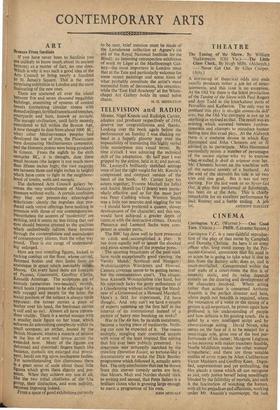CONTEMPORARY ARTS
ART
Bronzes From Sardinia If you have never been to Sardinia you are unlikely to know much about its ancient bronzes; as a matter of fact, no one does. Which is why it was such a good idea of the Arts Council to bring nearly a hundred to St. James's Square. This is the most surprising exhibition in London and the most fascinating of the new ones.
There are scattered all over the island between five and seven thousand megalithic buildings, consisting of systems of conical towers (containing circular rooms with tedomed ceilings), fortified tunnels and trenches, Courtyards and huts, known as nuraghl. e nuragic civilisation, until fairly recently nsidered to fall within the Bronze Age, Is now thought to date from about 1000 BC, When other Mediterranean peoples had developed the use of iron, the Phoenicians Were dominating Mediterranean commerce, and the Homeric poems were being produced in Greece. From the eighth to the sixth centuries BC, it is thought, date these small .bronzes (the largest is not much more than fifteen inches high; the vast majority are between three and eight inches in height) Which have come to light in the neighbour- hood of tombs, wells and nuraghi.
The darkened Arts Council gallery be- comes the very embodiment of Malrawt's museum without walls. A certain confusion may blur our present-day ethnological eclecticism: clearly . the impulses that pro- duced such votive offerings have nothing in common with those of our contemporaries. Nevertheless the accents of 'modernity' are striking, and it seems no less fitting that our eyes should become attuned to the qualities which undoubtedly inform these bronzes through the contemplation and assimilation of contemporary idioms, than the other way round. Thus is our range of understand- ing enlarged. to be seen, brief mention must be made of the Lansdowne collection at Agnew's (in aid of the Royal National Institute for the Blind); an imposing retrospective exhibition of work by Leger at the Marlborough Gal- lery—the most important in London since that at the Tate and particularly welcome for some recent paintings and some hints of what probably constitute the artist's most successful form of decoration, his ceramics; while the 'East End Academy' at the White chapel Art Gallery holds its usual naive


































 Previous page
Previous page